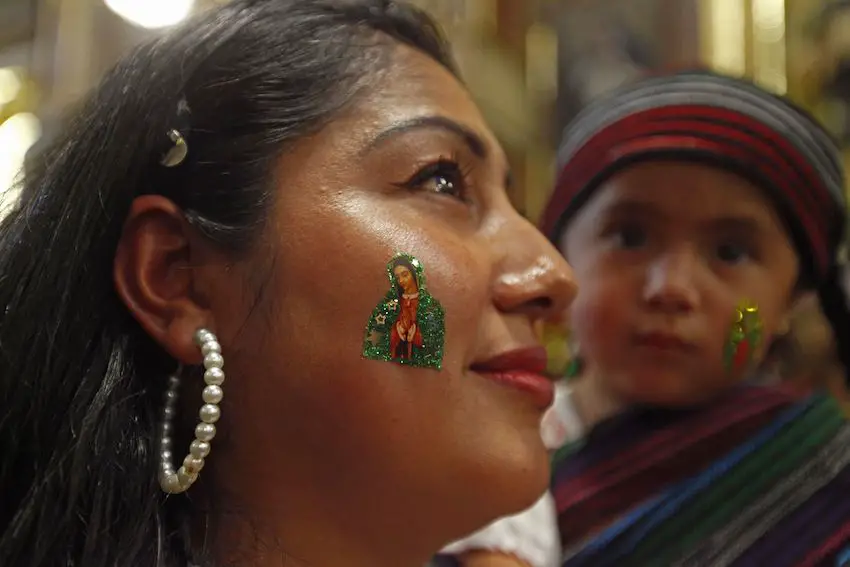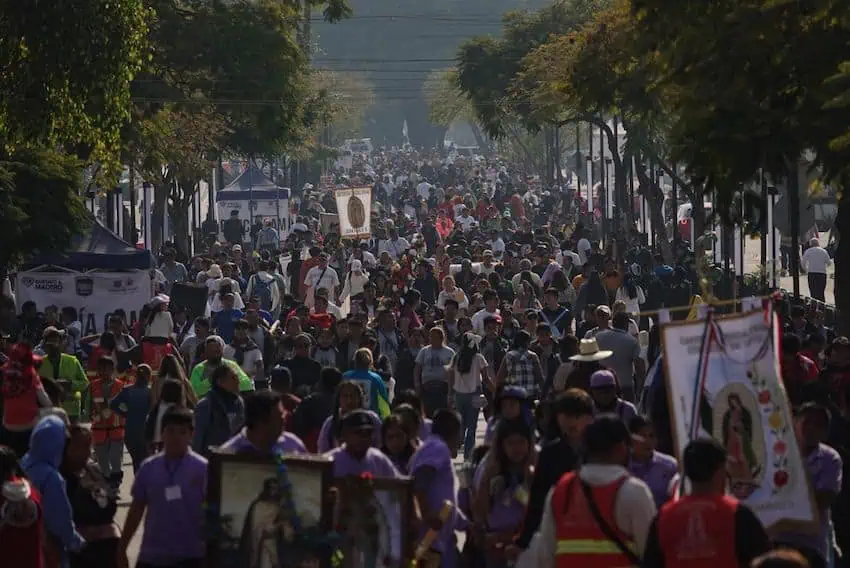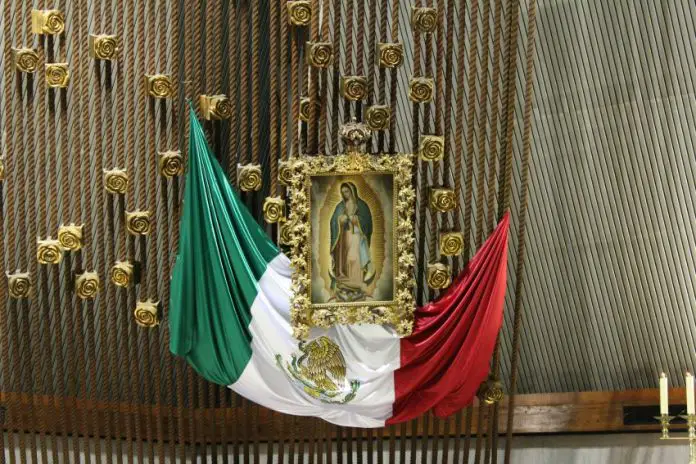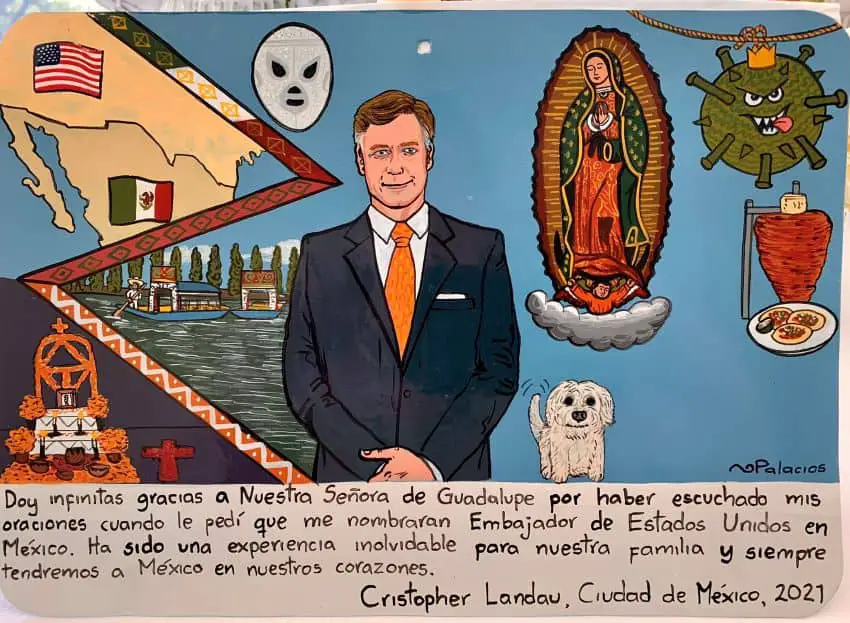December 12 is a very important date for thousands of Mexicans and followers of La Guadalupana (the Virgin Mary), as it is the feast of the Virgin of Guadalupe, an icon of syncretism between Indigenous and Spanish cultures in Mexico. Her image, with mestizo features, symbolizes the cultural fusion that occurred during the Conquest and gave rise to Mexican identity.
The history of the Virgin of Guadalupe dates back to Dec. 9, 1531, when according to Catholic tradition, the Virgin Mary first appeared to Juan Diego, a converted Indigenous man, on the hill of Tepeyac.

The apparitions
- First Apparition (December 9): The Virgin asks Juan Diego to request the bishop to build a temple in her honor.
- Second Apparition (December 9): The Virgin insists that Juan Diego return the next day to see the bishop.
- Third Apparition (December 10): The bishop asks for a sign; the Virgin promises to give it the next day.
- Fourth Apparition (December 12): The Virgin sends Juan Diego to collect roses as a sign for the bishop.
- Fifth Apparition (December 12): The Virgin appears to Juan Diego’s sick uncle, healing him.
The miracle of the tilma
When presenting himself to Bishop Fray Juan de Zumárraga, Juan Diego unfolded his tilma (a cloak), letting the roses fall. At that moment, the image of the Virgin of Guadalupe miraculously appeared printed on the ayate (the cloth).

10 interesting (and quirky) facts about the Virgin of Guadalupe
- Origin of the name: The etymological origin of Guadalupe is a subject of controversy. Some experts suggest it comes from the Arabic “Wad-al-luben” or “Wuad al luben,” meaning “hidden river” or “river of black stones.” Another theory suggests a combination of Arabic and Latin: “Wad” (river) + “lupus” (wolf), resulting in “river of wolves.” Finally, a third theory indicates that the origin of the name is actually Nahuatl, from the word “Coatlaxopeuh,” which sounds similar to “Guadalupe” and means “the one who crushes the serpent.”
- Details about the mantle: On the mantle of the Virgin, there are 46 stars distributed asymmetrically, reflecting the constellations of the winter sky on Dec. 12, 1531, the day of the apparition. The pupil of the Virgin’s eyes has also been studied by many; it reflects the image she sees when she reveals her mantle to Juan Diego and Bishop Fray Juan de Zumárraga, although this topic has been — understandably — controversial among the scientific community.
- A miracle? Juan Diego’s tilma is a typical cotton garment made with maguey fibers, which was used to cover much of the body during the era. The average lifespan of this material is 20 to 25 years; therefore, it is surprising that almost 500 years later it remains intact despite the adverse conditions it faced for more than 100 years — without any type of protection and exposed to heat from candle flames, wind and humidity.
- Number of pilgrims: The Basilica of Our Lady of Guadalupe is one of the most visited Marian sanctuaries in the world; it even surpasses the Vatican in terms of pilgrims, attracting more than 11 million Guadalupans annually.
- Followers of Guadalupe: Some internationally recognized public figures are faithful to Guadalupe. An example is former U.S. Ambassador to Mexico Christopher Landau, who previously shared on his X account that he believes the Virgin of Guadalupe granted him the miracle of becoming an ambassador in Mexico. Other personalities include famous guitarist Carlos Santana, Saint John Paul II, actor and tenor José Mojica, among others.

“I give infinite thanks to Our Lady of Guadalupe for having heard my prayers when I asked her to appoint me as U.S. Ambassador to Mexico. It has been an unforgettable experience for our family and we will always have Mexico in our hearts.” (Christopher Landau/X) - A devotion that crosses borders: Guadalupan devotion has spread throughout the world. In places like St. Peter’s Basilica in Italy, Notre-Dame Cathedral in Paris, St. Patrick’s Cathedral in New York City and Santa María Basilica in Seville, we can find altars dedicated to the Virgin.
- Three churches: After the fifth apparition in 1531, the bishop ordered a small temple to be built on Tepeyac Hill. Later, in 1695, architect Pedro de Arrieta constructed the old basilica. Due to the instability of the ground and the frequency of earthquakes in Mexico City, we can see today that this basilica started to lean and sink over time. Because of this, in 1974 architect Pedro Ramírez Vázquez built a new basilica with a modern design and greater capacity to accommodate the thousands of pilgrims who visit.
- A television program: Devotion to the Virgin is so popular today that Televisa created a program titled “La Rosa de Guadalupe” in 2008, which addresses social themes and challenges such as drug addiction, alcoholism and bulimia, among others. Its goal is to convey a positive message and a lesson in each episode.
- A symbol of freedom: During the Independence movement, Father Miguel Hidalgo took a banner of the Virgin of Guadalupe and used it as an emblem of his struggle.
- Lupes and Lupitas: In Mexico, the name Guadalupe is very popular among both men and women: José Guadalupe or María Guadalupe. Surely you know many Lupitas or Don Lupes. So now you know, on December 12, hug a Lupita to congratulate her.
With reports from BBC, ADN40 and Gaceta UNAM
María Ruiz is a resident of San Miguel de Allende. She works full-time as an Assistant Editor at Mexico News Daily and enjoys taking photos in her free time.

